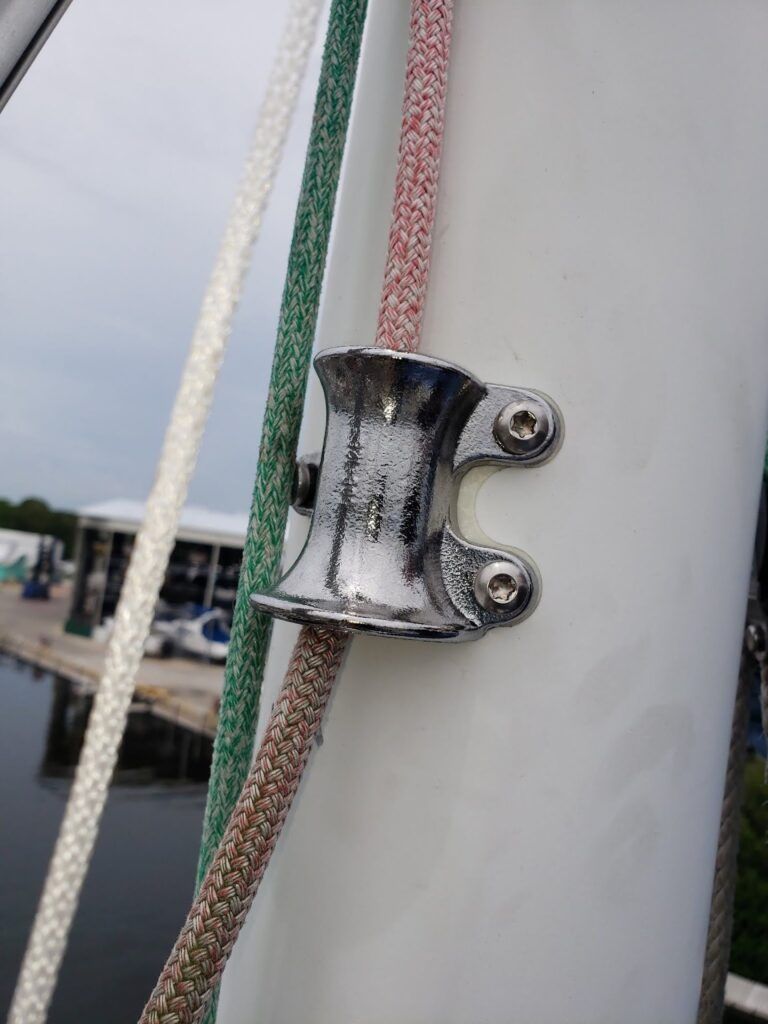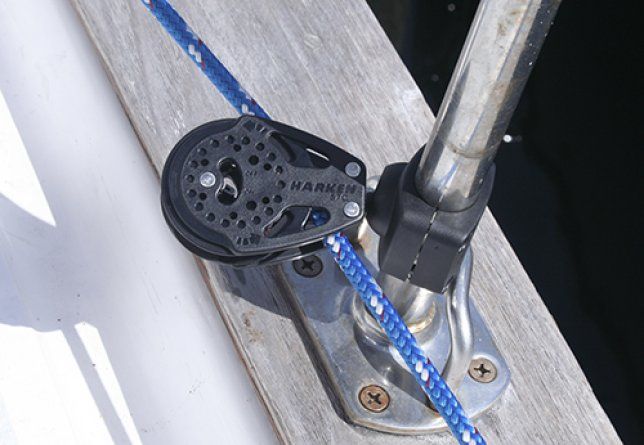In the October 2019 issue of Practical Sailor magazine, we looked at installing new roller furling gear for a genoa—one of the most popular upgrades on an older boat. The article documents the installation process on a Bristol 35.5 First Light, our former New England-based test boat. During the process, the manufacturer provided plenty of guidance, and reiterated important advice—if you have to use a winch on your furling gear, there is a good chance something is wrong with the furler. And if you have to really crank down on the winch, there is a good chance that things will get worse.
Headsail furling on sailboats 40 feet and under should be able to be accomplished with a hand-over-hand pull on the furling line. If a large genoa is set and the breeze fills in abruptly, it may take a little coaxing with a winch to get things going, but when its a fairly light wind day, and you need to start cranking away on a primary winch to instigate the furl, something is wrong with the system.
We have seen foils barber pole, or twist, due to excess tension on the furling line. Such scenarios usually involve torque applied at the drum and an upper swivel that refuses to turn. Bearing failure in the upper swivel is often the cause.
Systems with halyard blocks attached at the top-foil, which do not rely on upper swivels, never face this problem. But this style of furler is usually only used on boats 35 feet or shorter, and they have other sources of friction.
One of the easiest ways to improve the furling efficiency of all types of furlers is tackle the line-lead challenge. It starts with the angle that line leads on and off the drum, progresses into a sweeping arc as the line makes its way to the cockpit and ends with another change in direction that leads the line to the hands of a crew member or a winch drum.
All deflection away from a straight run creates friction, and the goal is to keep the accumulation of this parasitic load as low as possible. We noted that among the 20 furling-line fair leads tested by Practical Sailor (see link below), none utilized metal ball bearings. High molecular weight plastics have taken over and they should get some occasional wash-downs to clear grit and salt from the exposed bearing races.
When it comes to cutters and double headsail sloops, or the addition of an endless line furler, we prefer to lead furling lines to opposite sides of the boat. This tends to make line-handling more straightforward, although it does increase hardware needs.

Another common causes of roller furling failure to be aware of is a halyard wrap, when a slack halyard twists around the forestay above the furler top swivel. In a worst-case scenario, with your buffed cousin cranking down on the furling line with increasing resistance, a halyard wrap can lead to headstay failure, inciting a cascade of events that can lead to dismasting. Fortunately, there is an easy way to prevent this disaster.
The cause of halyard wrap is usually a a combination of poor halyard angle, a long (greater than a few inches) distance between top of the forestay and the furler top swivel, and lack of halyard tension. Furler manufacturers specify that halyard leads toward the forestay at a slight angle, so that the halyard is pulling slightly back toward the mast. In order to meet this specification, it is often necessary to add a halyard restrainer mounted on the mast (see photo). A diverter ring—effectively a fat donut installed above the top swivel—can also create the required angle, but this requires removing the forestay.
Selden, Harken, Schaefer and other marine hardware manufacturers all offer version of halyard restrainer and riggers often have their preference. Since these restrainers are made of stainless steel, it is important that they are properly isolated from the aluminum mast during installation. A combination of insulating mounting pads — usually supplied by the manufacturer — and insulating, dialectric grease on the fasteners does the trick. Our report on anti-seize coatings for spars found a few effective insulating greases, and our report on mast fasteners compared screws and rivets, and offered tips on ensuring long-lasting mast hardware installations.
For more on the topic of furlers, check out the following reports.
Refining Furling Line Fairleads
These and other topics are covered in our 4-volume ebook Practical Sailor’s Complete Look at Sails, available in our online bookstore, where all sales help support our testing program.








































and with a slack head stay there will be a centenary — sag — that resists turning though the arc ? and causes flexing at the joints of the foils for the furling systems that have foils linked together on forestay —
might be a reason for a back stay adjuster to keep the sag under control
also as a test — go to the bow and pull at the drum — sometimes a lot easier if the furling line is generating a lot of friction –
A timely article as I am replacing an aged out Profurl with an Alado furler. I only wish some space had been given to the Alado. This will be my second unit. The first was on a Cal 34. This new furler will be installed a much larger boat, an Olympic Adventure 47. As the Alado dispenses with ball bearings and relies instead on a bushing below the drum, my only concern is that friction will be an issue on this larger unit. The drum is 12 inches however and so should provide good mechanical advantage.
When furling the headsail becomes difficult due to wind conditions, we teach our students to sail downwind and set the main accordingly. This “shadows” the headsail from the wind and makes it very easy to furl. Another tip is to keep slight tension on the working jib sheet. When the clew of the furled headsail reaches the roll, keep light tension on both jib sheets and and make 3 or 4 turns on the headsail thereby lashing it to the foil. This will not only result in tighter spooling in the furler but also protect the furled headsail in high winds. Be sure to also secure each sheet on winches, with a rope clutch or cleat as appropriate to the vessel that you are sailing. As Darrell pointed out in this article, using a winch on the headsail furler is a very bad idea & should be avoided at all costs. We have been sailing for over 50 years and never had to resort to using a winch on a headsail furler.
I agree you should be able to avoid winching the furler line by proper handling, but it can be a good idea to put a single turn on a drum (no handle) or close the jammer to the one-way point, particularly on larger boats. In this way a gust, helming error, even a rest can be had without loosing what you’ve got.